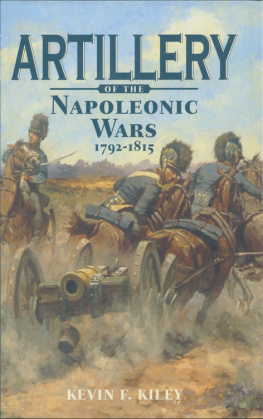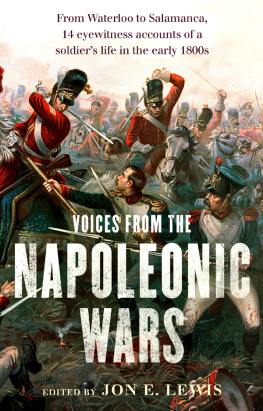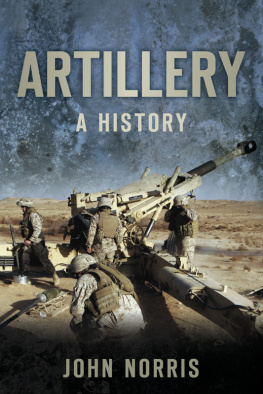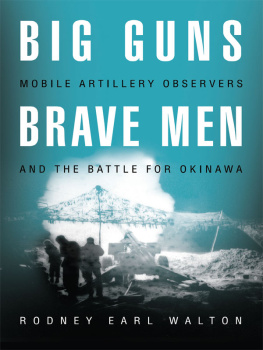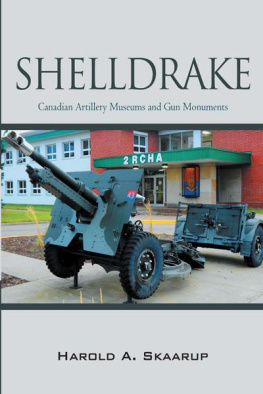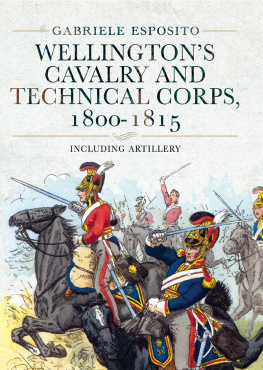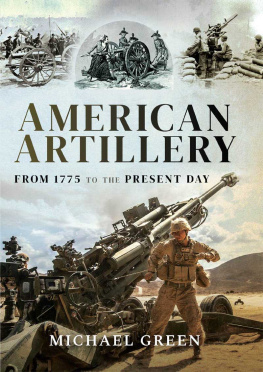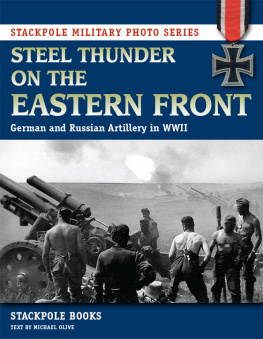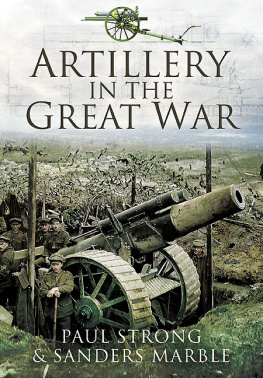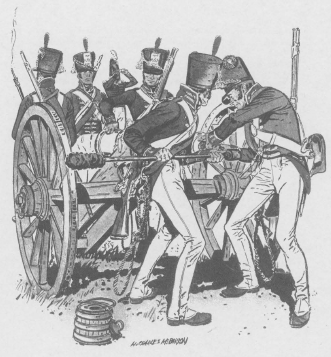ARTILLERY OF THE
NAPOLEONIC WARS
17921815
Artillery lends dignity
to what might otherwise be considered a vulgar brawl
Anonymous American artilleryman
ARTILLERY OF THE
NAPOLEONIC WARS
17921815
Kevin F. Kiley
Frontline Books
Artillery of the Napoleonic Wars, 17921815
First published in 2004 by Greenhill Books
published in this format in 2015 by
Frontline Books,
an imprint of
Pen & Sword Books Ltd
47 Church Street, Barnsley, S70 2AS
www.frontline-books.com
Copyright Kevin F. Kiley, 2004
The right of Kevin F. Kiley to be identified as the author of this work has been asserted in accordance with the Copyright, Patents and Designs Act, 1988.
All rights reserved. No part of this publication may be reproduced, stored in retrieval system, or transmitted, in any form, or by any means (electronic, mechanical, photocopying, recording or otherwise), without the prior written permission of the publisher. Any person who does any unauthorised act in relation to this publication may be liable to criminal prosecution and civil claims for damages.
British Library Cataloguing in Publication Data
Kiley, Kevin F.
Artillery of the Napoleonic Wars
1. France. Armee - Artillery - History - 19th century
2. Napoleonic wars, 18001800 - Artillery operations
3. Artillery France - History - 19th century
4. Artillery - Europe - History - 19th century
I. Title
358.1209409034
ISBN 1-85367-583-0
Library of Congress Cataloging-in-Publication Data available
Edited, designed and typeset by Roger Chesneau
Maps by John Richards
Printed and bound by MPG Books Ltd, Bodmin, Cornwall
Title page illustration:
The 2nd US Regiment of Artillery: an excellent representation of the crew of a large
12-pounder on a Gribeauval carriage, adopted by the US Army in 1809. (From
the Company of Military Historians book Military Uniforms Volume II: Years of Growth, 1796-1851, used by permission of The Company of Military Historians)
To my wife and partner Daisy, who has been that batterys vivandire and real boss, and to my son Michael, named for a fallen warrior and true hero, and who, hopefully, will be the first of the family in many generations who wont have to follow the road to the rumbling gunsthough there are worse roads to follow.
This is for the two of them, and for all of our absent comrades-in-arms who have gone across the river.
We sleep safe in our beds because rough men stand ready in the night to visit violence on those who would do us harm.
George Orwell
Virtute et Valore
Contents
Plates(between pages 160 and 177)
Line drawings
A project, such as a book, on a wide subject, such as artillery from a certain period in history, is impossible to undertake alone. The information is myriad, the sources are widely dispersed and in many languages, and there is too much knowledge for one person to either possess or remember. Additionally, every single relevant subject cannot be covered in a book of this size; but I hope that this attempt will cover at least the major points.
There are also many people to thank for their generous help and selfless giving of time, effort, and expertise. First and foremost, my humble thanks to Lionel Leventhal of Greenhill Books, who graciously allowed me the opportunity to write this first book. Next, I thank my editors, Jonathan North, David Palmer, and Kate Baker: Jonathan approved and nurtured the project, kept me in line and focused, and provided both material and moral support when needed; David provided impetus and had the ability to crack the whip when my enthusiasm lagged; and Kate saw the book into print, was very supportive, and was patient with my short- comings. Without these three this book would never have gone beyond the planning stage. Many and enduring thanks go to Digby Smith, who came up with the idea for the book, and who encouraged me to suggest it as a viable project.
Next, the following friends contributed mightily to the project with material that otherwise would have been ignored: George Nafziger, Don Graves (authority on the War of 1812), Scott Bowden, Steven Smith, Dominique Contant, Greg Gorsuch, Dave Sullivan (of The Company of Military Historians), Alexander Zhmodikov, Yves Martin, Keith Rocco, Tom Holmberg, Bob Burnham (of The Napoleon Series), and Geert van Uythoven. These gentlemen and scholars graciously loaned me many books, pamphlets, regulations, and pictures that were invaluable in the compilation of information and in tying up the many loose ends and solving dead ends that were continuously popping up. Other friends who gave valuable material assistance were Jonathan Cooper, Robert Ouvrard, Robert Mosher, and Mark Urban.
I thank also the many friends and colleagues on three Napoleonic Forums on the ubiquitous Internet, where information flows freely: there are many scholars and knowledgeable historians, much more versed in the history of period than I, especially Max Sewell, Tony Broughton, Alex Stavropolous, James OHalloran, Howie Muir, Robert Goetz, Donald Brown, Susan Howard, Katherine Luchini, Jan Kowalik, Matt Pavone, Robert Henry, and Marc Moerman. I am also grateful to the staff of Helion Books in Great Britain, who searched and found two volumes that were essential to the completion of this book.
I thank the Marines and sailors of Battery F, 2nd Battalion 12th Marines, whom I had the honor and privilege to command. They were a superb unit, the best I ever saw, continuing in the long and rich tradition of American artillery. There is no greater honor in life than to be a battery commander and a commander of Marines, and I had the privilege to be both twice in my life. I thank all the Marines of the 10th Marine Regiment, past, present, and future, with whom I had the honor to be assigned twice, and with whom I served in combat. The Death Angels taught the opposition how to shoot.
I thank Colonel David W. Haughey USMC, Retired, Colonel Mark Davis USMC, Retired, and Lieutenant Colonel Tom King USMC, Retired, who had such a profound influence on me as an artilleryman. They taught me how to become one, and how to command Marines; they also taught me the profession of arms. Many, many thanks: these gentlemen are the essence of what Marine artillery is.
Finally, I give thanks for my family: for my father, Captain Francis M. Kiley, USNR, a veteran of the US Navy in two world wars, a veteran sea dog and Captain Courageous, who heard the owl and saw the elephant and was a great father; for my mother, Eileen Findley Kiley, who first set me on the course of military history by giving me my first set of toy soldiers and continually encouraging me in my writing; for my eldest brother, Captain Michael J. Kiley USA, USMA Class of 1964, killed in action in the Republic of Vietnam in 1967 while leading his airborne rifle company against the enemy, and who taught me tactics, wargamed with me on the floor battlefields of childhood, taught me his love of our alma mater, the United States Military Academy at West Point, and introduced me to the Napoleonic epic with that excellent book, A

